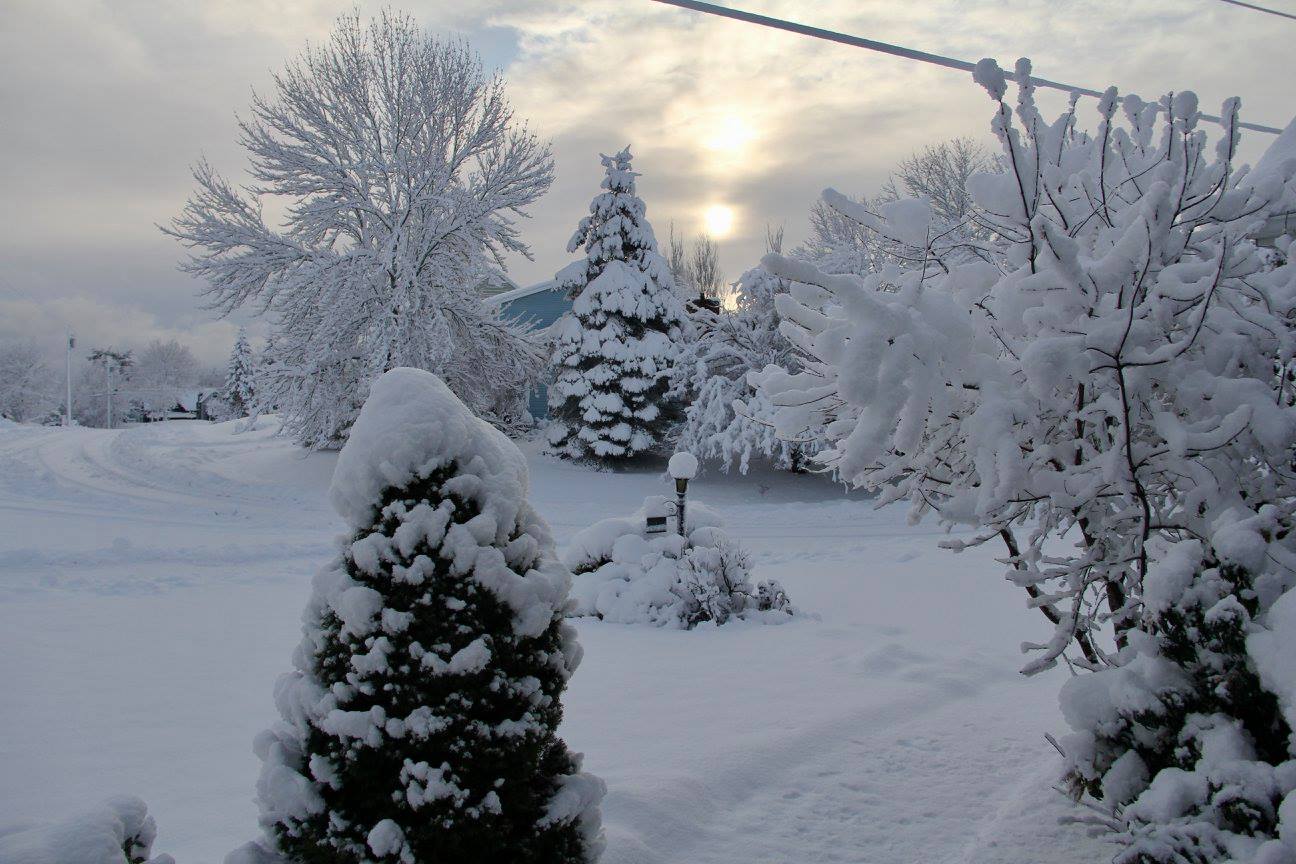5 days. 3 Nor'easters.
Snowy path around Reservoir Park
Looks like the back woods, but I'm actually in our yard beside our house in this pic.
We had a little snow in March. After the last two weeks of February, which were remarkably snow-less, the skies of March brought snow. Don gave me snowshoes for my birthday in February, but we didn't have enough snow to try them out until last week. And while our friends here tell us that we haven't had a "real" snow yet, we've had over a foot of snow (over 30 cm) on the ground a few times.
And last week, three nor'easters rolled through Nova Scotia in five days bringing lots of wind, heavy snow and rain. We've had some weather! And some snow... Heavy wet snow is different than cold dry fluffy snow which is different than blowing snow which is different than slush. Just ask the person doing the shoveling. Yeah. No wonder the Inuit have dozens of words for snow.
FAQ: Why don't we have a snowblower? When we rented our house back in November, we were given the option of paying for a snow removal service. Being complete newbies to Canadian winter, we thought this might be a good thing to do. So, if it snows more than 10 cm, a wonderful young man in a red snowplow shows up and clears our driveway. Takes him about 5 minutes. We still have to shovel the walk to the front door. But good church friends gave us a snow shovel plus an ergonomic snow shovel, so that's quick work. Unless it's heavy snow.... Next year, we'll probably have a snowblower.
So what exactly is a nor'easter? A nor'easter is a strong area of low pressure along the East Coast of the United States that typically features winds from the northeast off the Atlantic Ocean – hence the term "nor'easter." Nor'easters are most often associated with strong winter storms crawling up the Northeast coast, but snow isn't a requirement for such a storm. These storms are most frequent and strongest between September and April, but can occur any time of the year.
In the language of meteorology, a nor'easter is a macro scale cyclone. A nor'easter looks like a tropical cyclone on a weather map but they are cold core low pressure systems, meaning they thrive on cold air instead of the warm air inside a tropical cyclone. Having lived through both of these kinds of systems, I can tell you the wind is equally fierce and they both leave behind downed trees, power outages, flooded (or snow covered) roads and damaged houses. The eastern and southern coasts of Nova Scotia typically take the brunt of the storm; our Annapolis Valley on the Bay of Fundy side is a little more protected. We had no damage here and just a brief power outage. But we got to snowshoe and hike in the snow and Don captured some great photos.
Snowshoeing at Reservoir Park
Snowshoeing is great fun and easy to get the hang of. As my friend Julie told me in her succinct lessons on snowshoeing.
- Strap on your snowshoes (the hardest part!).
- Walk.
You do have to walk with slightly wider and longer gait so you don't step on your snowshoe - which will cause you to fall down. Trust me on this one.
And now the snow photos. All photo cred: Don Flowers. Click on the pics for details.
















